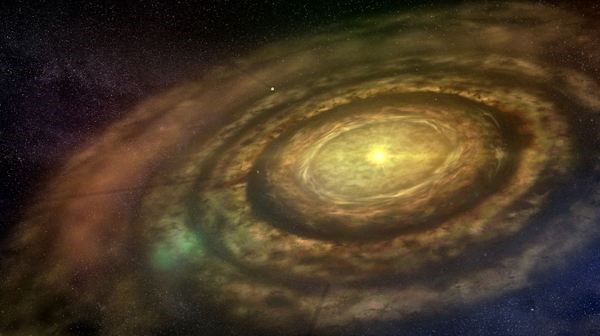
Many planetary materials exhibit distinct isotopic compositions. For example, oxygen isotopic compositions differ among the terrestrial planets: Mercury, Venus, Earth, and Mars. These differences indicate that each planet formed from a distinct isotopic reservoir, and possibly different regions, in the protoplanetary disk. Many attempts have been made to reconstruct the distribution of isotopic compositions in the protoplanetary disk using current planet compositions. However, recent dynamical modeling of giant planet migration during solar system formation suggests early conditions that would have promoted rapid mixing of materials in the protoplanetary disk, and therefore, would not sustain early isotopic differences.
A recent study by Jingyi Mah and Ramon Brasser of the Tokyo Institute of Technology modeled the protoplanetary disk using available isotopic data to understand how terrestrial planets formed. Mah and Brasser combined dynamical modeling of planet formation with isotopic constraints from meteorites and obtained results consistent with the observed isotopic differences between planets being due to an original isotopic gradient in the protoplanetary disk. This is in contrast to dynamical models of planet formation that call for efficient mixing and results in nearly identical isotopic compositions for all planets. Mah and Brasser argue in favor of a mass-depleted inner disk where terrestrial planets accrete from locally derived material. The authors argue that the region of the protoplanetary disk where the terrestrial planets were growing probably did not experience mixing sufficient to completely homogenize an early isotopic gradient. Instead, the results of Mah and Brasser indicate that each accreting planet is built using locally derived materials and are not consistent with complex mixing of materials on a solar system scale. READ MORE